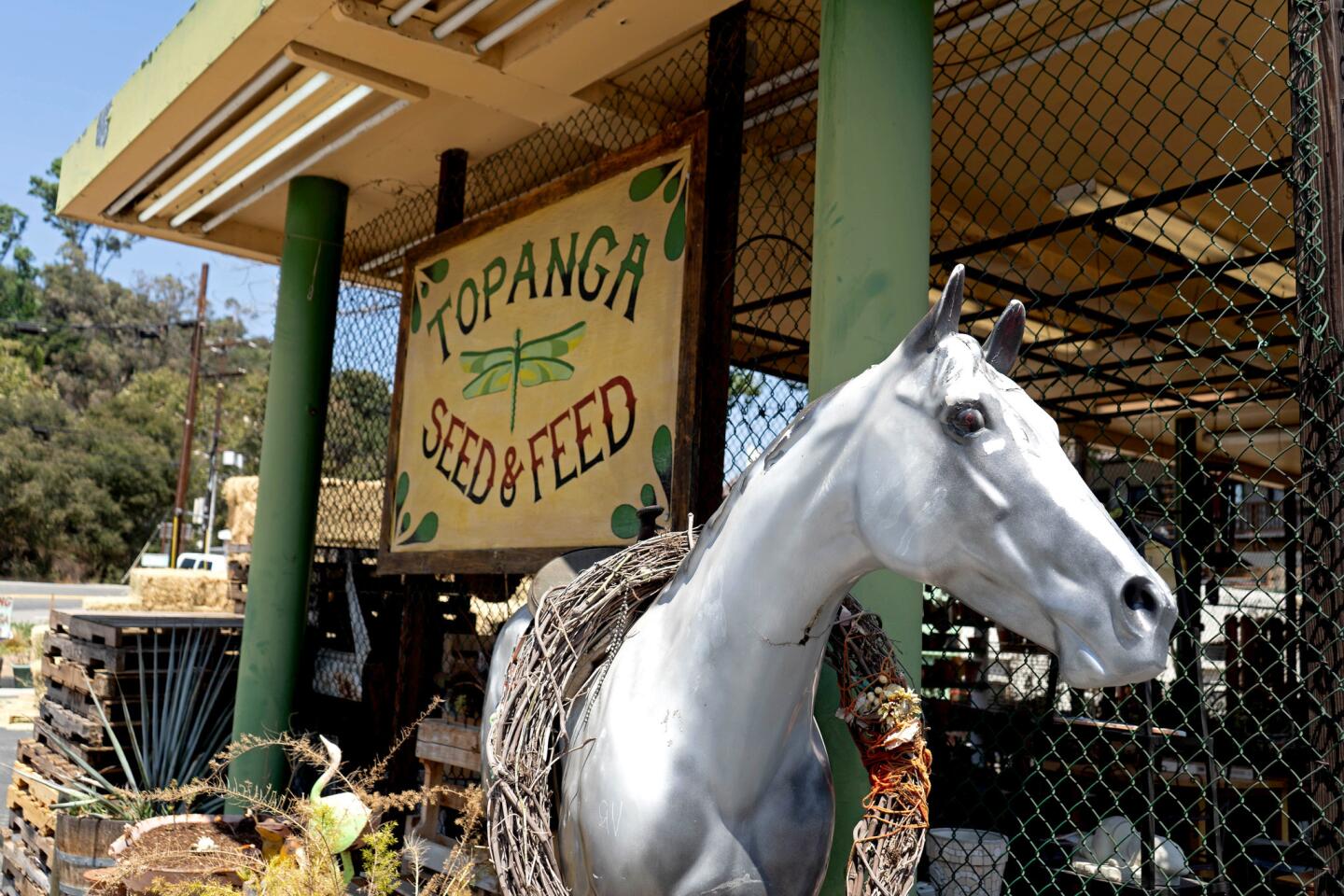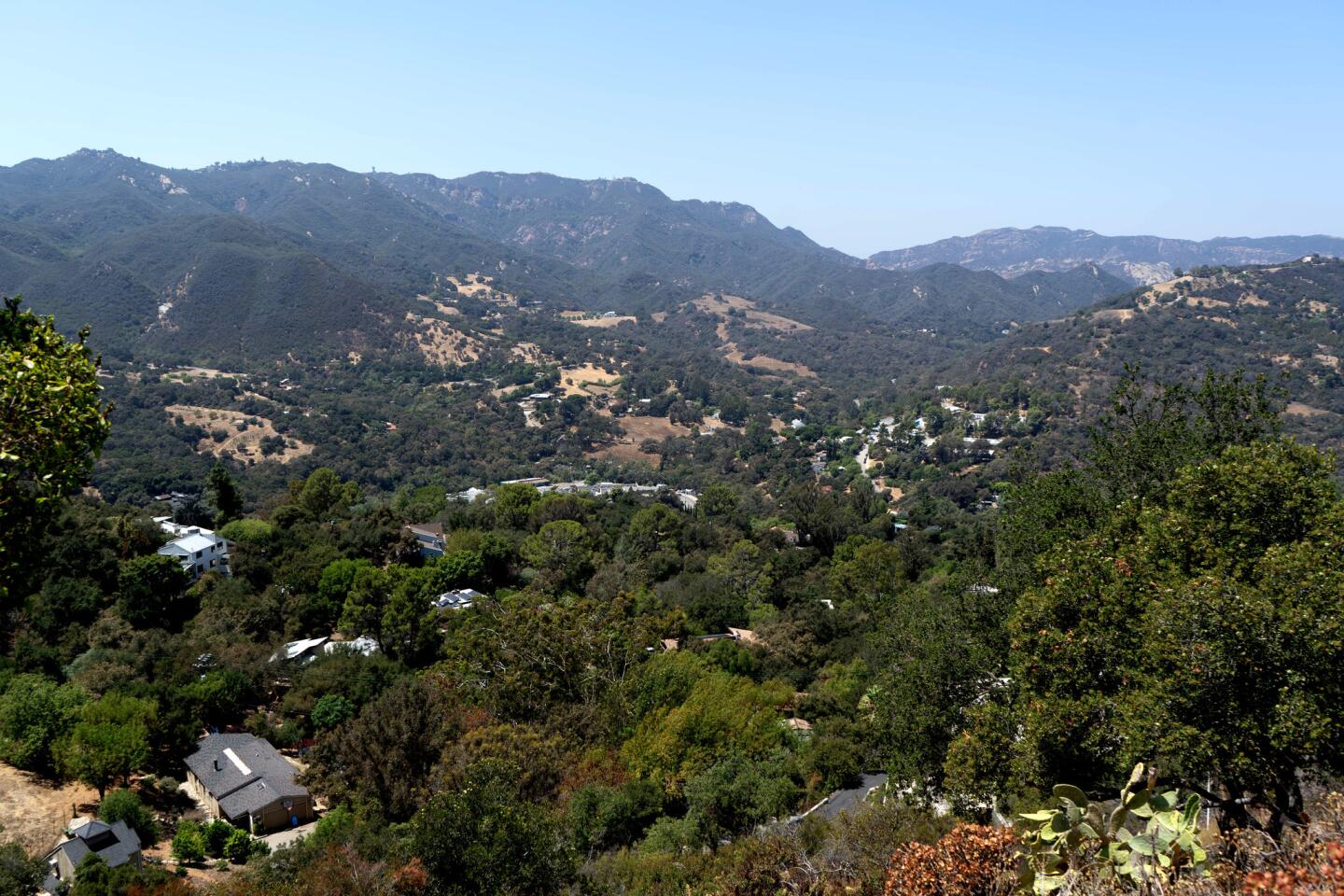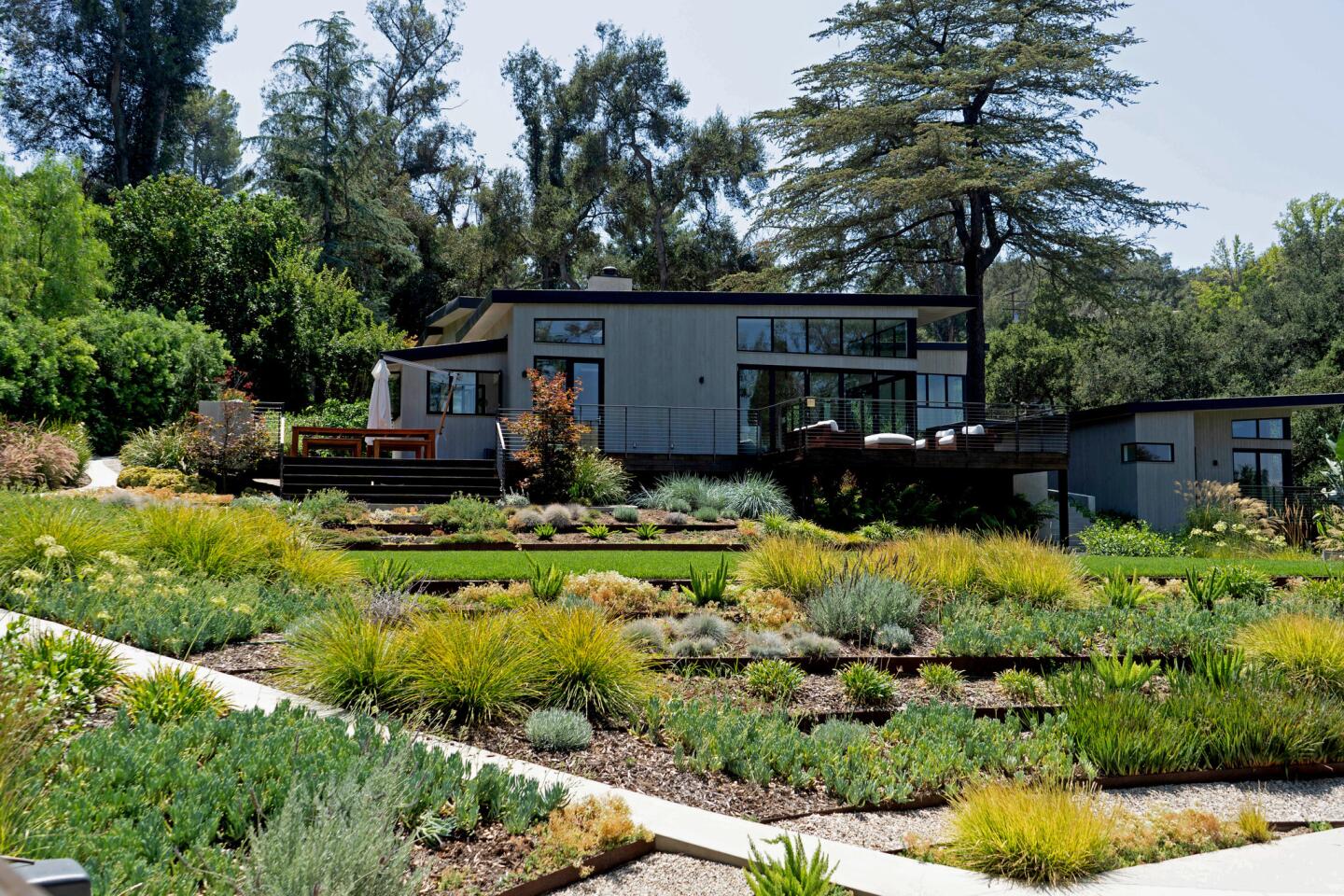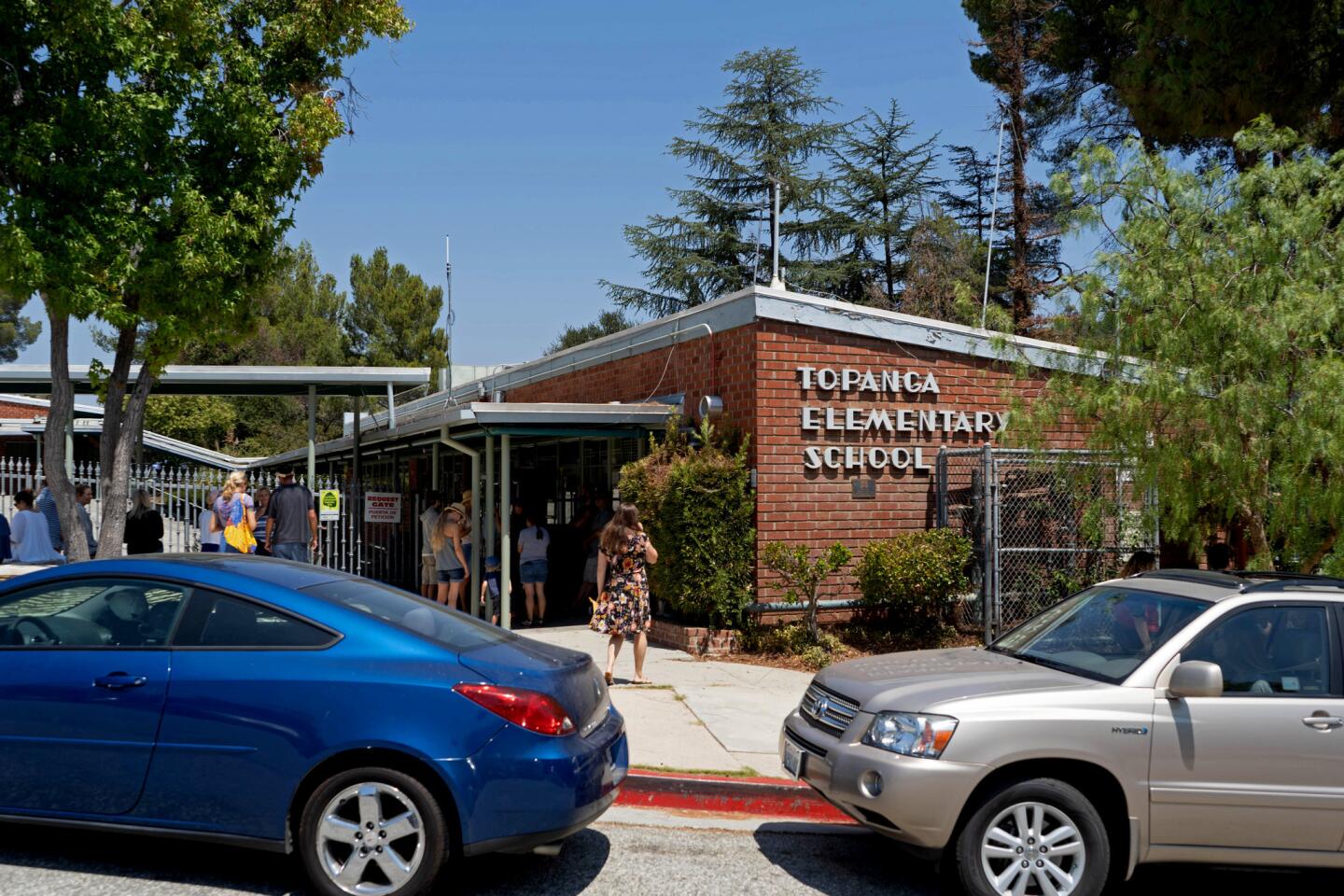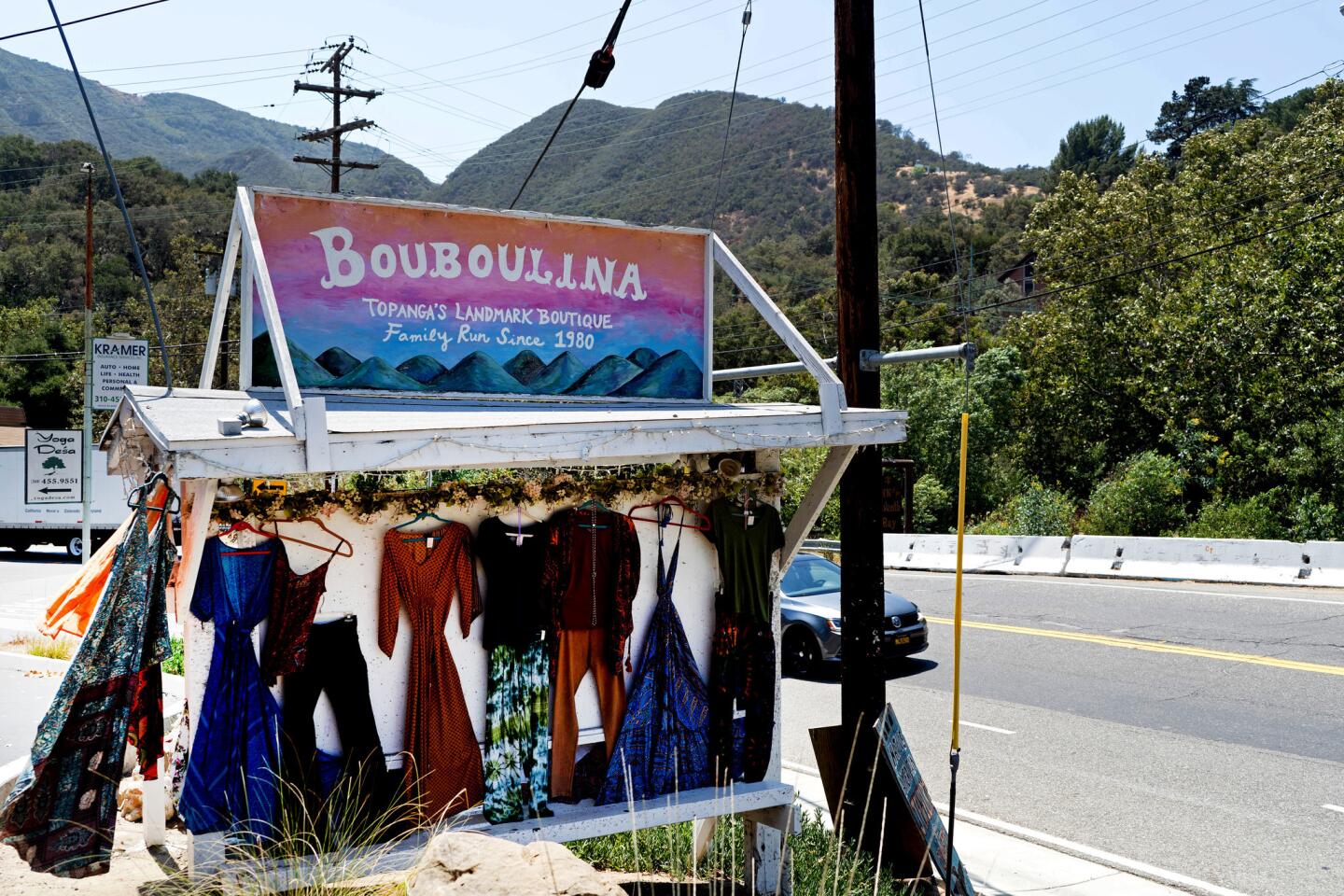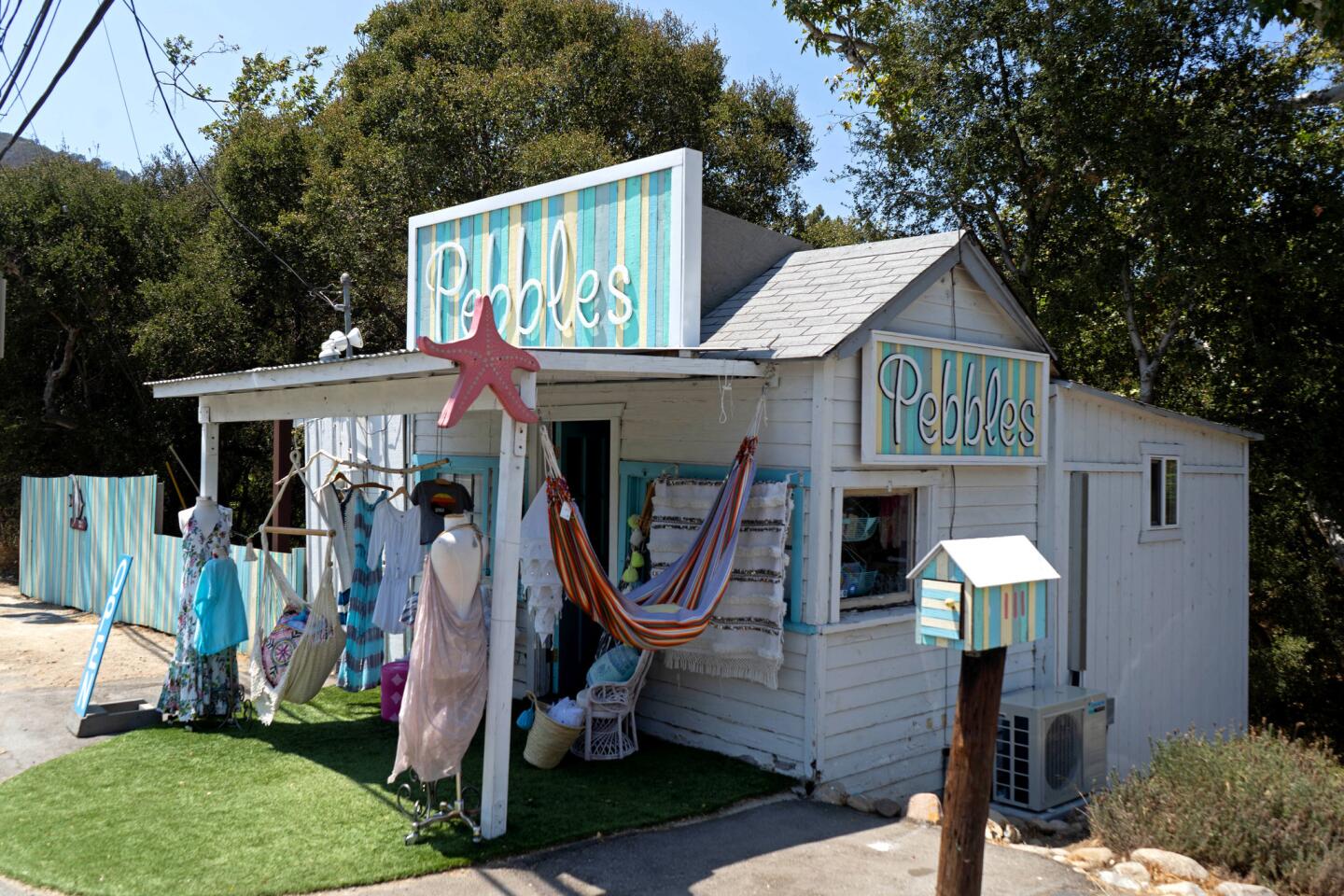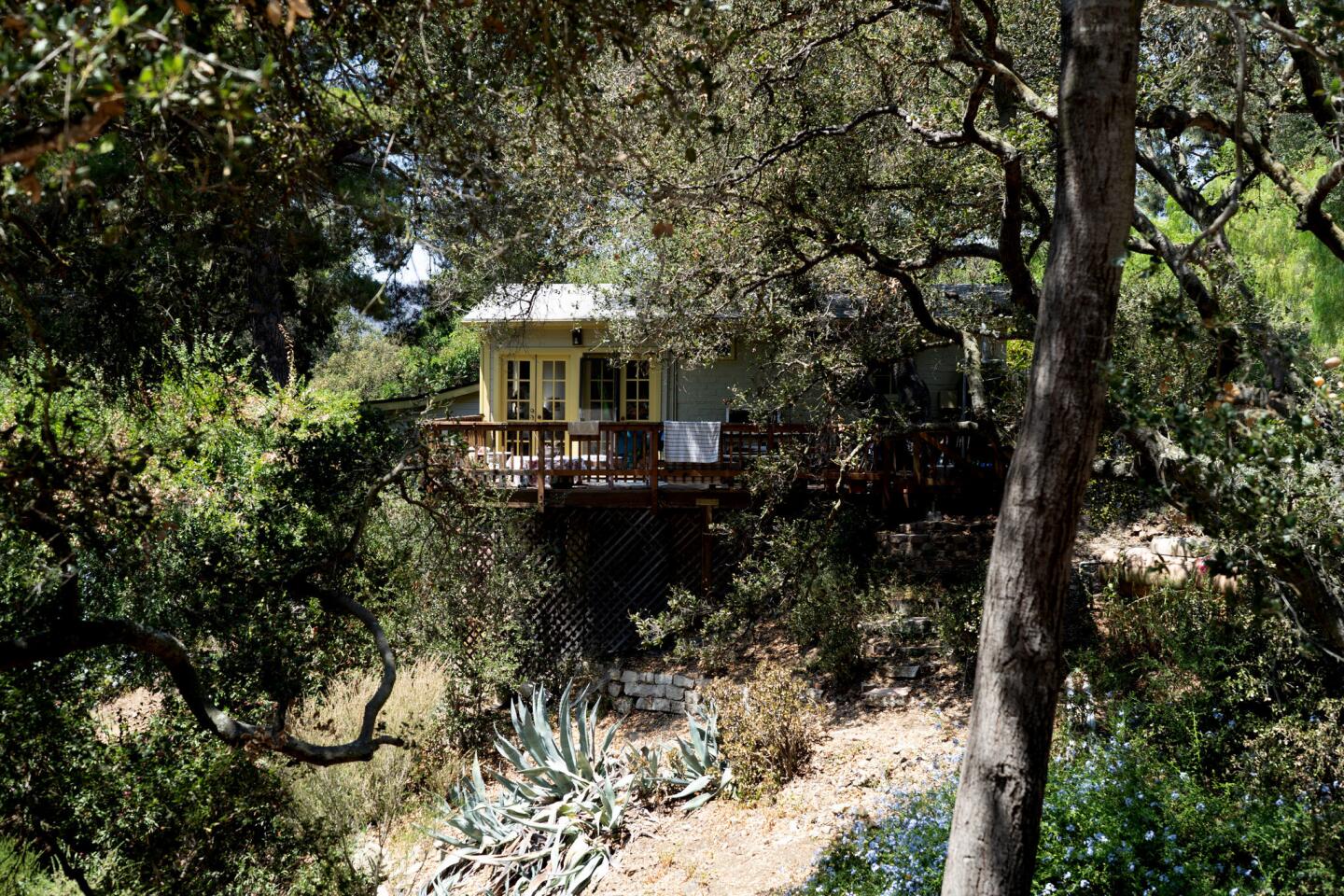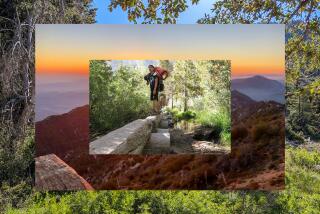Neighborhood Spotlight: Topanga, like an aging hippie, refuses to wash off its natural character
What is it about the canyons of Los Angeles that they attract artists, musicians, writers, actors and an array of folks representing an astounding variety of spiritual pursuits?
How can one explain the remarkable concentration of creative energy — shot through with a general sense of good vibes — emanating from Topanga Canyon (and its countercultural cousin Laurel Canyon)?
Part of it has to be the free time available to the generally well-to-do people living there, enjoying a laid-back lifestyle and geographic isolation from the mellow-harshing realities of modern American life.
In the canyon, there is time to write, time to paint, time to take in the short mountain sunsets and think about what it all means.
But it’s uncharitable to suggest that the peaceful, easy feeling flowing down Topanga Canyon and into the Pacific springs entirely from a bottomless well of privilege.
Struggling artists still struggle, even in the Santa Monica Mountains, and even if there are fewer of them now than there were 50 years ago. Then, restless young boomers prowled the canyon, acoustic guitars slung over their backs and psilocybin caps filling their buckskin shoulder bags.
They had come to Topanga for the same reason the more bohemian elements of 1920s Hollywood had braved long drives over dodgy mountain roads to their weekend cottages and cabins — to get away from L.A.
In those early years, it was not a place many people lived in year-round: too remote to commute into work in the city, spotty utilities coverage, no good restaurants. But it was a great place to recharge for a few days before heading back to the grind of early movie-making, which prized speed and volume in production above all else.
What the boomers who followed them were fleeing was altogether more unpleasant than the studio system. A season of tumult and division, caused by deepening American involvement in the Vietnam War and opposition by older whites to the Civil Rights movement, drove the young emigres into the mountains. There they formed a community reflecting their values of peace, equality and individualism.
Big-name artists and musicians, drawn by the scene, joined the new generation of movie stars who had taken up residence in Topanga. Dennis Hopper rubbed shoulders with Dennis Wilson, who smoked grass with his erstwhile houseguest Charles Manson, never suspecting a thing. Neil Young recorded “After the Gold Rush” in the basement of his Topanga Canyon home, and the Topanga Corral nightclub reputedly inspired Jim Morrison to write “Roadhouse Blues.”
By the time the 1970s staggered to a close, Topanga’s moment of peak cultural relevance had passed. In the fading afterglow, under strands of Edison bulbs on decks and patios across the canyon, current denizens toast the past, trading psychedelics for glasses of high-end organic Cabernet.
Neighborhood highlights
A place above: The Tongva people held Topanga to be a sacred location, and anyone who has taken the stunningly scenic drive down the mountains to the bay can understand why.
Country living: The hills surrounding it may be filled with modern luxury homes, but Topanga itself clings to its rustic roots, eschewing chain restaurants and strip malls completely.
Hippie history: The luminaries of the Age of Aquarius are mostly long gone, but the canyon’s countercultural past is kept alive with events such as the Topanga Days music festival.
Neighborhood challenges
Far-out prices: your average poet or painter is going to have a tough time scraping together the bread to buy in a market where median prices are now well above $1.5 million.
Expert insight
Anne-Christine von Wetter, an agent with more than 30 years of experience in the area, has one message for potential newcomers: “Don’t try to change Topanga. Let Topanga change you.”
Even if you wanted to change Topanga, good luck. The oak trees are protected, as is Topanga Creek.
“It’s very important that people here respect nature,” von Wetter said. Consequently, daily concerns of its residents include the avoidance of mountain lions, coyotes, rattlesnakes and forest fires, but she said residents prefer that to being overrun by apartments and condo complexes.
“This is a small community. We’re not Venice or the Pacific Palisades, and we don’t want to be those places,” she said. “We want to keep our uniqueness.”
Market snapshot
In the 90290 ZIP Code, based on 13 sales, the median sales price for single-family homes in June was $1.1 million, up 9.9% year over year, according to CoreLogic.
Report card
Four of the five public schools in the Topanga area scored above 900 on the 2013 Academic Performance Index. The highest is Woodland Hills Elementary, at 967, followed by Alice C. Stelle Middle, at 920, Bay Laurel Elementary, at 913, and Chaparral Elementary, at 907.
Calabasas High, the closest public high school, scored 875.
Times staff writer Jack Flemming contributed to this report.
More to Read
Sign up for Essential California
The most important California stories and recommendations in your inbox every morning.
You may occasionally receive promotional content from the Los Angeles Times.
